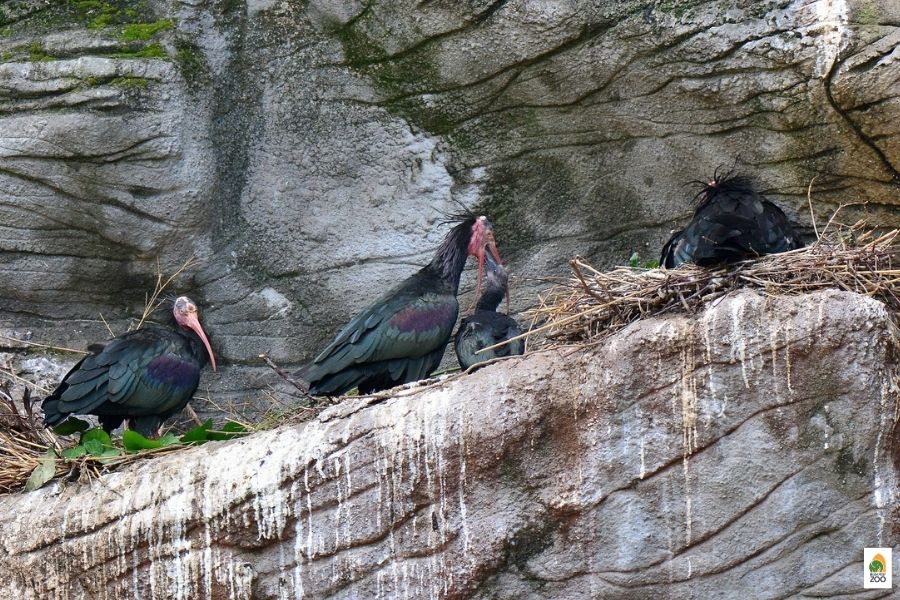Nestlings at the endangered northern bald ibises July 8, 2022
 What are the similarities between a tiger, and elephant, a red panda, and a northern bald ibis? They are all endangered species. We care not only about the more popular species, but also about those who may be less well known. We put a lot of effort into protecting this species while trying to increase its popularity and raising awareness.
What are the similarities between a tiger, and elephant, a red panda, and a northern bald ibis? They are all endangered species. We care not only about the more popular species, but also about those who may be less well known. We put a lot of effort into protecting this species while trying to increase its popularity and raising awareness.
The northern bald ibises are interesting both from a zoological and a historical point of view, mainly because during the Middle Ages they were also present in Hungary.
We have been breeding them succesfully for decades, and many of the hatchlings later took part in reintroduction programs. The purpose of these programs is to repopulate areas where northern bald ibises were common but due to human activities they went extinct.
Currently such a program is going underway at the southern part of Spain, in Andalusia. We have also participated in this program, we sent animals from last year and the year before that too for reintroduction purposes.
This year's nesting season also promises to be a successful one. For now you can see 7 hatchling that are already half the size of the adults. Besides them, other chicks have hatched as well, but they can not be observed well yet. According to our plans many of these birds will be a part of the reintroduction program. Of course, only if they have grown up and do not need parental care anymore. Our northern bald ibises are the residents of our Vulture aviary, which got its name from an other residents the griffon vultures, but you can also observe many other bird species in the aviary. The visitors can even go inside the exhibit and walk amongst the animals. The rock ledge where the ibises nest can be the best observed from the walkway under the Xantus-house's which goes between the polar bear exhibit and the Cassowary house.